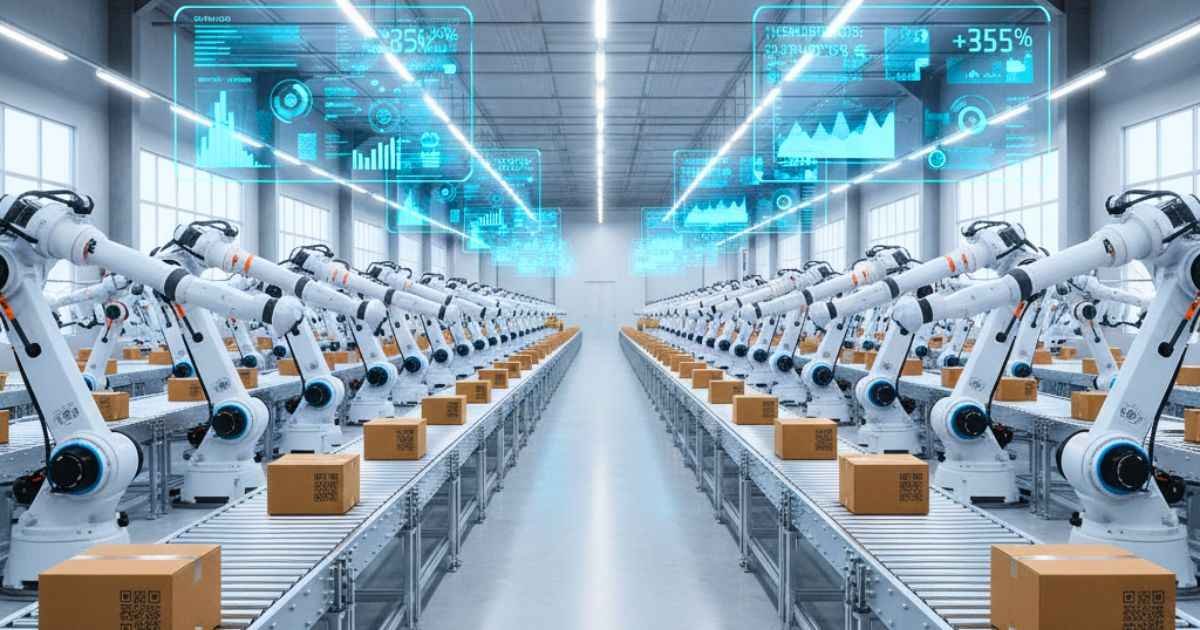In today’s competitive manufacturing landscape, companies across every industry — from food and beverage to pharmaceuticals — are under pressure to produce more, waste less, and deliver faster. While improving efficiency and consistency has always been a goal, the rising costs of labor, materials, and logistics have made packaging automation one of the most strategic investments a business can make. But when does it make sense to automate, and how can you determine whether the return on investment (ROI) justifies the cost?
Understanding the True Cost of Manual Packaging
Manual packaging may appear inexpensive at first glance — after all, it avoids large upfront equipment costs. However, hidden expenses quickly add up. Labor turnover, inconsistent output, human error, and downtime can erode margins over time. In many facilities, packaging remains the most labor-intensive part of production, often limiting output and scalability.
When a company begins producing higher volumes or experiences growing demand fluctuations, manual processes struggle to keep up. Employees can only pack so many units per hour, and even small inefficiencies compound into significant production losses. These operational bottlenecks are where automation begins to show its value.
The Core Benefits of Packaging Automation
The most obvious advantage of packaging automation is speed — automated systems can package, label, seal, and palletize far faster than manual operations. But speed is only part of the story. Automation also improves consistency, reduces waste, and enhances safety by minimizing the need for repetitive manual tasks.
Other key benefits include:
- Reduced labor costs: Machines can perform around the clock with fewer operators.
- Improved accuracy: Automated systems ensure uniform weight, sealing, and labeling.
- Less material waste: Precision controls minimize overuse of films, labels, and adhesives.
- Scalability: Automation allows quick adaptation to demand spikes or new product lines.
- Data and insight: Smart packaging equipment can track performance, helping managers optimize production in real time.
For companies in food and beverage, pharmaceuticals, or consumer goods, these gains often translate into stronger product quality and compliance with industry regulations — both critical for brand reputation.
Calculating ROI: Factors to Consider
The ROI of packaging automation depends on multiple variables, including production volume, labor costs, and downtime. A simple ROI formula starts with comparing current manual costs (labor, waste, rework, maintenance) to projected automated costs (equipment investment, energy, maintenance, and training).
For example, if automation can reduce your packaging labor force by half or eliminate frequent errors that lead to product returns, the payback period could be as short as 12–24 months. In some high-volume operations, that timeline can shrink even further.
Companies should also consider non-financial returns, such as improved worker safety, greater customer satisfaction, and the ability to scale without drastically increasing headcount.
When to Automate
Not every operation requires full automation. For smaller manufacturers, partial automation — such as automated sealing, labeling, or case-packing — can provide measurable returns without overextending budgets.
Signs it may be time to automate include:
- Production bottlenecks caused by manual packaging
- Rising labor costs or high employee turnover
- Increasing demand for consistent, high-volume output
- Frequent packaging errors or material waste
- New product launches that strain existing capacity
If several of these issues apply, automation may not only make financial sense but also become essential to staying competitive.
A Smarter, More Efficient Future
The question for most manufacturers is no longer if they should automate, but when. As automation technology becomes more accessible and adaptable, even small and mid-sized businesses are finding ways to integrate it cost-effectively.
Ultimately, packaging automation isn’t just about machinery — it’s about unlocking long-term efficiency, reliability, and scalability. Companies that invest wisely today will be the ones best positioned to meet tomorrow’s production demands.

I’m Emma Rose, the founder of tryhardguides.co.uk, and a content creator with a passion for writing across multiple niches—including health, lifestyle, tech, career, and personal development. I love turning complex ideas into relatable, easy-to-digest content that helps people learn, grow, and stay inspired. Whether I’m sharing practical tips or diving into thought-provoking topics, my goal is always to add real value and connect with readers on a deeper level.
Discover more from Try Hard Guides
Subscribe to get the latest posts sent to your email.

